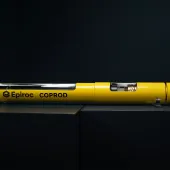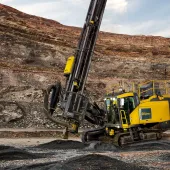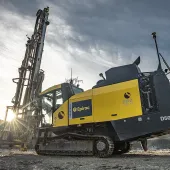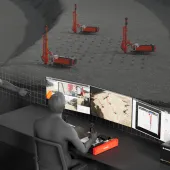Beware the 10% Trap

Steven W. Beasley, managing director of Rock Drill Engineering Ltd, explains why buying and using cheaper alternatives to ‘world-class’ down-the-hole hammers can actually prove more expensive
In the present economical climate it is an attractive proposition for an operator to save 10% on the purchase of their new down-the-hole (DTH) hammer, but beware of the folly of this because one hammer is not always the same as the next. It is important to make sure that the hammer that is chosen is ‘world class’ and not an ‘also ran’, otherwise the hundred pounds or so that was saved on the initial purchase may turn into a very costly decision.
World-class hammers are those that have been specifically designed and built by a manufacturing company for the professional operator, with speed, reliability and overall cost effectiveness in mind. They are not re-engineered products (usually copies of other makers’ designs, built to less exacting standards) but pure excellence in design and quality, made of high-performance steels with parts that are manufactured to very fine tolerances and specially heat-treated in house. All this comes at a cost for the leading manufacturers; but not so for the company that cribs designs from others without incurring the cost of research and development, and expensive steels and processes.
Surprisingly, there are very few DTH hammer makers who fall into the world-class category, perhaps no more than three or four globally, but there are plenty of manufacturers that can supply cheaper ‘look-a-likes’ which, not surprisingly, lack the performance qualities of the real thing.
Sometimes on a drilling test, a world-class hammer might be proven to drill 10–15% faster than a cheaper alternative and the operator might say: ‘So what?’ Indeed, those with an eye for a bargain may well be attracted by the cheaper alternative.
However, as John Ruskin put it: ‘It is unwise to pay too much, but it is worse to pay too little’.
The exercise shown in figures 1 and 2 may well prove Ruskin’s point. This looks at drilling for 30,000m and considers the extra hidden costs associated with using a cheaper alternative – Hammer ‘B’ – which was 10% lower in price.
Suddenly, the decision to buy the cheaper alternative looks like folly, and instead of saving a hundred pounds or so, the potential extra cost of using Hammer ‘B’ over just 30,000m of drilling has risen to more than £6,000, which equates to 20p per metre drilled. So just how cheap is cheap?
Another 10% trap to be aware of
It is not unusual for a world-class hammer to continue drilling for many thousands of metres without need of attention and to still seem to be giving good performance. But the driller needs to aware that, over time, the hammer will suffer internal wear that will impair performance and, if ignored, will begin to incur extra costs just like Hammer ‘B’ in the previous exercise.
Operating air pressure dictates performance – the higher the operating pressure the faster the piston in the hammer will cycle and the faster the hammer will drill. Conversely, as the operating air pressure drops, so will the drilling speed, and this can happen as the internal parts become worn and lose air (fig. 3).
A 10% drop in operating air pressure will give a pro-rata drop in penetration speed that will put a world-class hammer in the same league as the cheaper alternative Hammer ’B’ and so even before this stage is reached the hammer should be culled or worn parts changed to restore it to the best serviceable condition. As much as it may pain an operating company to have to cull a hammer that, on the face of it, seems to be in good working condition, many professional drilling companies do this as a matter of course to help reduce costs. Their drillers constantly monitor the working air pressures for any sign of permanent drop-off and will remove hammers that begin to lose pressure. For further information visit: www.rockdrill.co.uk
Remember:
The 10% Effect will also apply if the performance level of a 'world-class' hammer is allowed to drop to that of Hammer B
Care and planned culling at the right time can save pounds.








